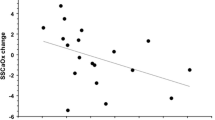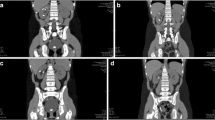Abstract
Our objective was to evaluate the oxidative stress and renal tubular cell damage in patients who have renal stones compared to normal subjects. The patients were re-evaluated after 1-months supplementation with potassium citrate. We recruited 30 patients (11 males and 19 females) diagnosed with kidney stones and scheduled for surgical stone removal the following month, and 30 healthy non-stone formers (14 males and 16 females). Two 24-h urine samples and one heparinized blood sample were collected from each subject. Plasma was separated from the erythrocytes and assayed for creatinine, potassium, sodium, calcium, magnesium, phosphate, malondialdehyde (MDA, a lipid peroxidation product) (P-MDA), protein thiol as an indicator of protein oxidation, and vitamin E. Erythrocytes were analysed for MDA (E-MDA), reduced glutathione (GSH) and cellular glutathione peroxidase (cGPx) activity. The urine was analyzed for pH, creatinine, potassium, sodium, calcium, magnesium, phosphate, oxalate, citrate, MDA (U-MDA), total protein (U-protein) and N-acetyl-β-glucosaminidase (NAG) activity. For the stone patients, urine and blood samples were re-evaluated after supplementation with potassium citrate (60 mEq/day) for 1 month. Renal stone patients had higher plasma creatinine and lower plasma potassium, urinary pH, potassium, magnesium, phosphate and citrate than the controls. The patients had higher P-MDA, E-MDA, U-MDA, U-protein and NAG activity, but lower GSH, cGPx activity, protein thiol and vitamin E, when compared with controls. After potassium citrate supplementation, P-MDA and E-MDA decreased while plasma vitamin E, urinary NAG activity and citrate increased. Renal stone disease is associated with high oxidative stress and damage to renal tubular cells. These abnormalities are coincident with an increase in blood lipid peroxidation products and a decrease in antioxidant status. Although supplementation with potassium citrate improved urinary citrate levels and oxidative stress, it neither reduced urinary lipid peroxidation products nor remedied the damage to renal tubular cells, probably due to the existence of kidney stones.


Similar content being viewed by others
References
Anderson RA (2002) A complementary approach to urolithiasis prevention. World J Urol 20:294–301
Khan SR (1991) Pathogenesis of oxalate urolithiasis: lessons from experimental studies with rats. Am J Kidney Dis 17:398–401
Selvam R (2002) Calcium oxalate stone disease: role of lipid peroxidation and antioxidants. Urol Res 30:35–47
Thamilselvan S, Byer KJ, Hackett RL, Khan SR (2000) Free radical scavengers, catalase and superoxide dismutase provide protection from oxalate-associated injury to LLC-PK1 and MDCK cells. J Urol 164:224
Thamilselvan S, Khan SR, Menon M (2003) Oxalate and calcium oxalate mediated free radical toxicity in renal epithelial cells: effect of antioxidants. Urol Res 31:3–9
Scheid C, Koul H, Hill WA, Narod LJ, Kennington L, Honeyman T, Jonassen J, Menon M (1996) Oxalate toxicity in LLC-PK1 cells: role of free radicals. Kidney Int 49:413–419
Thamilselvan S, Khan SR (1998) Oxalate and calcium oxalate crystals are injurious to renal epithelial cells: results of in vivo and in vitro studies. J Nephrol [Suppl1]11:66–69
Huang HS, Chen CF, Chien CT, Chen J (2000) Possible biphasic changes of free radicals in ethylene glycol-induced nephrolithiasis in rats. BJU Int 85:1143–1149
Khan SR, Shevock PN, Hackett RL (1989) Urinary enzymes and calcium oxalate urolithiasis. J Urol 142:846–849
Perez-Blanco FJ, Arrabal-Martin M, Villen I, Zuluaga A, Rodriguez-Cuatero A (2000) Urinary activity of N-acetyl-β-glucosaminidase in patients with nephrolithiasis. Nephron 86:518–519
Winter P, Ganter K, Heimbach D, Hesse A (1996) N-acetyl-beta-D-glucosaminidase excretion in calcium oxalate stone patients and its relation to the risk of stone formation. Scand J Urol Nephrol 30:439–443
Regnault C, Postaire ERR, Rousset GJP, Bejot M, Hazebroucq GF (1993) Influence of beta-carotene, vitamin E, and vitamin C on endogenous antioxidant defenses in erythrocytes. Ann Pharmacother 27:1349–1350
Sriboonlue P, Prasongwatana V, Chata K, Tungsanga K (1992) Prevalence of upper urinary tract stone disease in a rural community of north-eastern Thailand. Br J Urol 69: 240–244
Yanagawa M, Kawamura J, Onishi T, Soga N, Kameda K, Sriboonlue P, Prasongwattana V, Borwornpadungkitti S (1997) Incidence of urolithiasis in northeast Thailand. Int J Urol 4:537–540
Sriboonlue P, Prosongwattana V, Sriboonlue M, Chata K, Tungsanga K, Sitprija V (1990) Low specific gravity urine with crystalluria as discriminant index for nephrolithiasis. J Med Assoc Thai 73:634–640
Marshall PJ, Warso MA, Lands WEM (1985) Selective microdetermination of lipid hydroperoxides. Anal Biochem 145:192–199
Hu ML, Louie S, Cross CE, Motchnik P, Halliwell B (1993) Antioxidant protection against hypochlorous acid in human plasma. J Lab Clin Med 121:257–262
Thurnham DI, Davies JA, Crimp BJ, Stiunayake RD, Davis M (1986) The use of different lipids to express serum tocopherol: lipid ratios for the measurement of vitamin E status. Ann Clin Biochem. 23:514–520
Inal TC, Tuli A, Yuregir GT (1996) Evaluation of reference values for erythrocyte glutathione. Clin Chim Acta 256:189–196
Günzler WA, Kremers H, Flohé L (1974) An improved coupled test procedure for glutathione peroxidase (E.C. 1.11.1.9.) in blood. Z Klin Chem Klin Biochem 12:444–448
Petrarulo M, Facchini P, Cerelli E, Marangella M, Linari F (1995) Citrate in urine determined with a new citrate lyase method. Clin Chem 41:1518–1521
Sriboonlue P, Suwantrai S, Prasongwatana V (1998) An indirect method for urinary oxalate estimation. Clin Chim Acta 273:59–68
Lowry OH, Rosebrough NJ, Farr AL, Randall RJ (1951) Protein measurement with the Folin phenol reagent. J Biol Chem 193:265–275
Horak E, Hopfer SM, Sunderman FW (1981) Spectrophotometric assay for urinary N-acetyl-beta-D-glucosaminidase activity. Clin Chem 27:1180–1185
Huang HS, Ma MC, Chen CF, Chen J (2003) Lipid peroxidation and its correlations with urinary levels of oxalate, citric acid, and osteopontin in patients with renal calcium oxalate stones. Urology 62:1123–1128
Sriboonlue P, prasongwattana V, Tungsanga K, Tosukhowong P, Phantumvanit P, Bejraputra O, Sitprija V (1991) Blood and urinary aggregator and inhibitor composition in controls and renal-stone patients from northeastern Thialand. Nephron 59:591–596
Pongpaew P, Schelp FP, Supawan V, Prayarahong B, Mahaweerawat U, Intarakhao C, Sriboonlue P, Migasena P (1991) Influence of dietary intake on alpha-2-macroglobulin and other biochemical parameters in healthy Thai males. Nutr Res 11:559
Tosukhowong P, Bovornpadugkitti S, Prasongwatana V, Tungsanga K, Jutuporn S, Dissayabutr T, Reungjui S, Sriboonlue P (2002) Urinary citrate excretion in patients with renal stone: roles of leukocyte ATP citrate lyase activity and potassium salts therapy. Clin Chim Acta 325:71–78
Hudgins LC, Hellerstein M, Seidman C, Neese R, Diakun J, Hirsch J (1996) Human fatty acid synthesis is stimulated by a eucaloric low fat, high carbohydrate diet. J Clin Invest 97:2081–2091
Bovornpadungkitti S, Sriboonlue P, Tavichakorntrakool R, Prasongwatana V, Suwantrai S, Predanon C, Tosukhowong P, Suntarapa S (2000) Potassium, sodium and magnesium contents in skeletal muscle of renal stone formers: a study in an area of low potassium intake. J Med Assoc Thai 83:756–763
Ray PE, Suga S, Liu XH, Huang X, Johnson RJ (2001) Chronic potassium depletion induces renal injury, salt sensitivity, and hypertension in young rats. Kidney Int 59:1850–1858
Khan SR, Byer KJ (2004) Possible protective role for citrate during crystal induced injury. Proceedings of the 10th International Symposium on Urolithiasis 2004, May 24–28, Hong Kong, pp 64–65
Selvam R, Bijikurien T (1992) Effect of citrate feeding on the free radical induced changes in experimental urolithiasis. Indian J Exp Biol 30:705–710
Anbazhagan M, Hariprasad C, Samudram P, Latha P, Latha M, Selvam R (1999) Effect of oral supplementation of vitamin E in hyperoxaluric patients on urinary risk factors. J Clin Biochem Nutr 27:37–47
Golovanov SA, Ianenko EK, Dzeranov NK et al. (1998) Lipid peroxidation and the antioxidant system of patients with urolithiasis after extracoporal lithotripsy. Urol Nefrol (Moscow) 2:14–16
Acknowledgements
The authors thank Mr. Bryan Roderick Hamman for assistance with the English language presentation of the manuscript, and the editors, associate editors, and reviewers of Urological Research for comments and suggestions.
Author information
Authors and Affiliations
Corresponding author
Rights and permissions
About this article
Cite this article
Tungsanga, K., Sriboonlue, P., Futrakul, P. et al. Renal tubular cell damage and oxidative stress in renal stone patients and the effect of potassium citrate treatment. Urol Res 33, 65–69 (2005). https://doi.org/10.1007/s00240-004-0444-4
Received:
Accepted:
Published:
Issue Date:
DOI: https://doi.org/10.1007/s00240-004-0444-4




